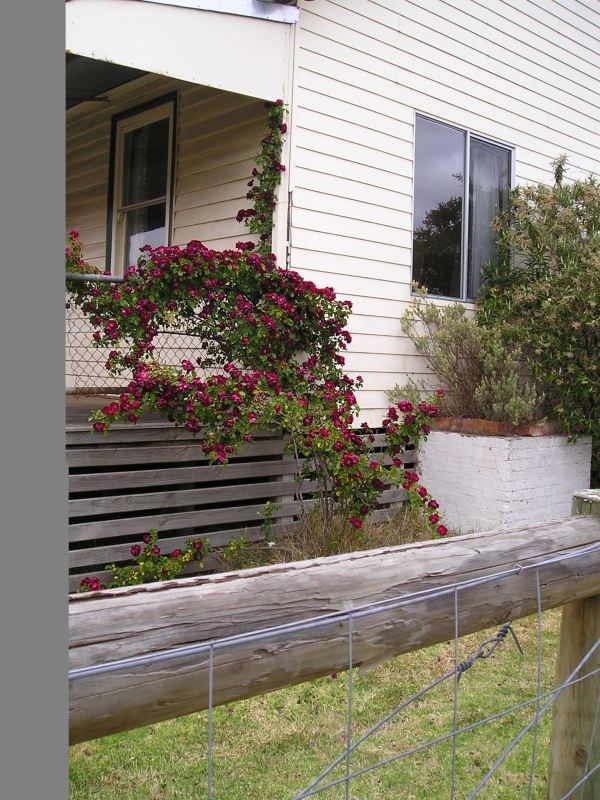buffy said:
Here we go. I have encouraged the rootstock to grow up the verandah at Casterton. It is now more extensive than in this photo, going up to the verandah roof also:

And this is a big download (2.4M) of a closeup:
http://i114.photobucket.com/albums/n245/lizza_06/VerandahRose1.jpg
And a couple of years later I found some of the ‘real’ rose still existed (it flowered!) so I have been nurturing that along too at the bottom. It’s a magnificent red highly perfumed large tea rose. I’m not sure if I’ve photographed it though.
Yep that looks like the description provided by Dinetta. Now all we need too do is name it. It obviously appears to be a rootstock worthy of keeping as a trailing rose in Australian conditions. Now all we need to do is put a name to it and add some of the research done on it..
Firstly it is one of those on the first link I posted. ie: Dr. Huey.
“Abstract:
South Australia is one of the main rose producing states of the Commonwealth, especially in proportion to its population. According to the latest statistical collection in 1974–75, almost 600,000 rose plants were grown; over half of these were sent interstate. The traditional rootstocks have been Rosa indica major (commonly but incorrectly called ‘Boursalt’) for dwarf budding and R. canina for stem or standard production. Both of these rootstocks suffer from certain disadvantages. R. indica major can give very erratic bud-take during autumn budding and will sucker under some conditions. R. canina also suckers badly and gives unreliable strike of cuttings.
For these reasons, several South Australian growers are turning to the rootstock ‘Dr. Huey’ for both dwarf and stem production.
‘Dr. Huey’ was originally bred as a garden rose in 1914 by G.C. Thomas in California, U.S.A. and it was not until 1940 that its potential as a rootstock was recognized but by the early 1950s it was being grown as
Full text: IPPS members ISHS members & pay-per-view
(PDF 82256 bytes) “
“Dr. Huey, is a vigorous moderate rambler that will grow to 3 m. Left to its own devices, the slender canes form a mounding shrub.”
“Dr. Huey, is commonly found at old home sites, because it has been used for years as a rootstock for Hybrid Tea roses. When the grafted rose dies, the Dr. Huey rootstock spouts and thrives. The primary bloom is in the spring.”


